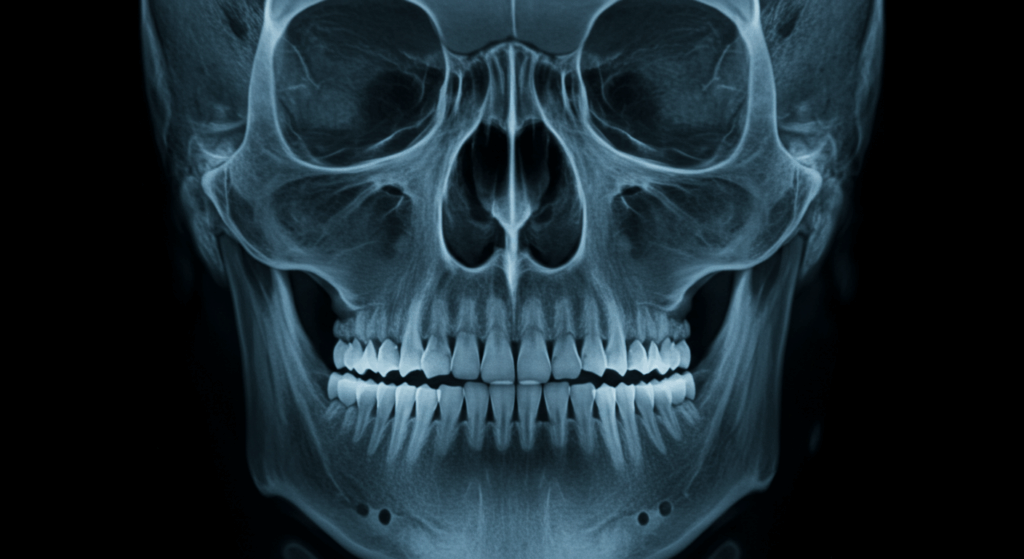Facial asymmetry, the degree to which the two sides of the face differ in shape, size, or position of features, is a universal human characteristic. While often subtle and unnoticed, significant facial asymmetry can impact an individual’s self-perception and social interactions. For transgender women (MTF) undergoing Facial Feminization Surgery (FFS), pre-existing facial asymmetry can be a concern, and addressing it effectively is a crucial aspect of achieving a harmonious and feminized facial appearance. As a surgeon specializing in FFS, I aim to provide a comprehensive understanding of facial asymmetry and how various FFS procedures can be strategically employed to address uneven features, contributing to a more balanced and feminine aesthetic.
It’s important to establish that perfect facial symmetry is rare. Minor variations between the left and right sides of the face are the norm, resulting from a complex interplay of genetics, growth patterns, and environmental factors. However, when asymmetry is pronounced, it can lead to self-consciousness and may be a significant source of dysphoria for transgender individuals seeking facial feminization.

Table of Contents
The Origins and Manifestations of Facial Asymmetry
Facial asymmetry can arise from a variety of factors, affecting both the underlying skeletal structures and the overlying soft tissues. Understanding these origins is essential for a comprehensive surgical approach.
Skeletal Asymmetry
- Developmental Variations: Subtle differences in the growth rates of the bones on each side of the face during development can lead to skeletal asymmetry. This can manifest as differences in the size or shape of the cheekbones (zygomatic bones), jawbone (mandible), forehead (frontal bone), or even the eye sockets (orbits). For instance, one side of the mandible might be slightly longer or have a more pronounced angle than the other.
- Trauma: Fractures or injuries to the facial bones can result in permanent asymmetry if not properly treated or if residual deformities persist after healing.
- Congenital Conditions: Certain congenital conditions, present at birth, can cause significant facial asymmetry, such as hemifacial microsomia (where one side of the face is underdeveloped).
- Dental Issues: Malocclusion (misalignment of teeth) and temporomandibular joint (TMJ) disorders can sometimes contribute to perceived or actual facial asymmetry by affecting the position of the jaw and surrounding soft tissues.
Soft Tissue Asymmetry
- Muscle Development: Differences in the strength and development of facial muscles on each side can lead to asymmetry in facial expressions and resting tone. For example, one masseter muscle (chewing muscle) might be more hypertrophied (enlarged) than the other, contributing to an uneven jawline.
- Fat Distribution: The distribution of subcutaneous fat can vary between the two sides of the face, leading to differences in volume and contour, particularly in the cheeks and jowls. Hormonal influences and individual variations play a role in this.
- Skin Elasticity and Laxity: Differences in skin elasticity and the degree of skin laxity (sagging) on each side of the face can contribute to perceived asymmetry, especially with age.
- Nerve Damage: Injury to facial nerves can cause muscle weakness or paralysis on one side of the face, leading to significant asymmetry in both appearance and function.

The Interplay of Asymmetry and Gender Perception
Facial features traditionally associated with masculinity often exhibit more pronounced and angular shapes, while feminine features tend to be softer and more rounded. Pre-existing facial asymmetry can sometimes accentuate features perceived as masculine, leading to increased gender dysphoria for MTF individuals. For example, an asymmetric jawline where one side is significantly more square or projecting can be a source of distress. Addressing this asymmetry during FFS is therefore not just about achieving balance but also about facilitating a more congruent feminine presentation.
FFS Procedures for Addressing Facial Asymmetry
Facial Feminization Surgery offers a range of procedures that can be strategically employed to address various aspects of facial asymmetry, aiming for a more balanced and feminized outcome. The specific approach is highly individualized, based on the nature and extent of the asymmetry.
Forehead Contouring and Brow Bone Reduction
Asymmetry in the brow bone prominence or the slope of the forehead can be addressed during forehead contouring (foreheadplasty). Techniques such as brow bone shaving (Type 1) or forehead reconstruction (Type 3, involving reshaping the outer table of the frontal bone) can be performed asymmetrically to reduce a more prominent brow bone on one side or to create a more balanced forehead slope. Bone cement or other biocompatible materials can also be used to augment a flatter side of the forehead to match the contralateral (opposite) side.
Rhinoplasty (Nose Reshaping)
The nose is a central facial feature, and asymmetry in its size, shape, or orientation can be quite noticeable. Rhinoplasty can address nasal asymmetry by reshaping the nasal bones and cartilage to create a more symmetrical and often more refined, feminine nasal appearance. This may involve reducing a larger side, augmenting a smaller side with cartilage grafts, or straightening a deviated septum (the wall between the nostrils) that contributes to external asymmetry.
Cheek Augmentation
Asymmetry in cheekbone projection or volume can be effectively addressed with cheek augmentation. This can be achieved using silicone implants of different sizes or shapes for each side, or through the strategic placement of fat grafts to equalize volume differences. Dermal fillers can also be used for temporary correction of minor cheek asymmetry. The goal is to create a more balanced and feminine midface contour with symmetrical cheekbone prominence.
Jawline Contouring (Mandibuloplasty)
Asymmetry in the jawline, such as differences in the angle, width, or projection of each side of the mandible, can be a significant concern for MTF individuals. Jawline contouring procedures, including angle reduction (shaving down the bony angle) and body reduction (narrowing the sides of the jawbone), can be performed asymmetrically to create a more balanced and tapered feminine jawline. One side might require more aggressive reduction than the other to achieve symmetry.
Chin Contouring (Genioplasty)
Chin asymmetry, involving differences in width, projection, or shape, can be addressed through genioplasty. This may involve sliding the chin bone laterally to correct a midline deviation, reducing a more prominent side, or augmenting a smaller side with bone grafts or implants to achieve greater symmetry and a more feminine chin shape.
Soft Tissue Procedures
While skeletal asymmetry often requires bony surgery, soft tissue asymmetry can be addressed through various techniques:
- Fat Grafting: Strategic fat grafting can be used to add volume to a deficient side of the face, such as a flatter cheek or a hollow area beneath the eye, to improve symmetry.
- Dermal Fillers: Similar to fat grafting, dermal fillers can provide temporary volume correction for soft tissue asymmetry.
- Botulinum Toxin (Botox): In cases of muscle asymmetry, such as a hypertrophied masseter muscle on one side, Botox injections can be used to temporarily weaken and reduce the size of the muscle, contributing to a more symmetrical jawline.
- Facelift Techniques: In older individuals with significant soft tissue laxity contributing to asymmetry, facelift procedures can be tailored to tighten and reposition the skin and underlying tissues to create a more balanced appearance.
The Importance of Pre-operative Assessment and Planning
A thorough pre-operative assessment is paramount for effectively addressing facial asymmetry during FFS. This involves:
- Detailed Facial Analysis: A comprehensive evaluation of the patient’s facial anatomy, including both skeletal structures and soft tissues, using physical examination, photographs, and often 3D imaging.
- Identification and Quantification of Asymmetry: Precisely identifying the areas and degree of asymmetry to develop a targeted surgical plan. Advanced imaging techniques can provide valuable quantitative data.
- Discussion of Patient Goals: Understanding the patient’s specific concerns regarding asymmetry and their desired level of correction. Realistic expectations are crucial.
- Computer Simulation: Utilizing computer imaging software to simulate the potential outcomes of asymmetric surgical adjustments, allowing the patient to visualize the proposed changes and provide feedback.
- Strategic Surgical Planning: Developing a detailed surgical plan that outlines the specific procedures and asymmetric adjustments needed to achieve the desired balance and feminization. This requires a high degree of surgical skill and experience.
Intraoperative Precision and Techniques
Addressing facial asymmetry during surgery requires meticulous attention to detail and precise surgical techniques. This may involve:
- Asymmetric Bone Resection: Carefully removing different amounts of bone on each side during procedures like brow bone reduction or jawline contouring to achieve symmetry.
- Custom Implant Placement: Utilizing implants of varying sizes, shapes, or positions on each side for cheek or chin augmentation to correct volume differences.
- Strategic Fat Grafting: Injecting different volumes of fat into specific areas on each side of the face to balance soft tissue contours.
- Intraoperative Assessment: Continuously evaluating the symmetry achieved during the surgery and making necessary adjustments.
Post-operative Considerations and Healing
The post-operative recovery after FFS procedures addressing asymmetry is similar to standard FFS recovery, but patients need to be aware that achieving complete symmetry may take time as swelling resolves and tissues settle. It’s crucial to follow the surgeon’s post-operative instructions carefully and to have realistic expectations about the degree of correction achievable. Minor residual asymmetry is still possible and within the normal range of human facial variation.
The Psychological Benefits of Addressing Asymmetry in FFS
For many transgender women, addressing facial asymmetry during FFS can lead to significant psychological benefits, contributing to a greater sense of facial harmony, improved self-confidence, and reduced gender dysphoria. Achieving a more balanced and feminized facial appearance can enhance their overall well-being and facilitate a more authentic self-expression.

Conclusion: Achieving Facial Balance in Feminization Surgery
Facial asymmetry is a common human trait that can be a significant concern for transgender women seeking facial feminization. FFS offers a comprehensive array of surgical procedures that can be strategically employed to address uneven facial features, aiming for a more balanced and harmonious feminine aesthetic. Through meticulous pre-operative assessment, individualized surgical planning, precise intraoperative techniques, and realistic post-operative expectations, surgeons can effectively mitigate facial asymmetry and contribute significantly to the overall success and psychological well-being of their MTF patients. The goal is not to create an unnatural perfect symmetry, but rather to achieve a balanced and feminized facial appearance that aligns with the individual’s gender identity and enhances their self-confidence.
Visit Dr.MFO Instagram profile to see real patient transformations! Get a glimpse of the incredible results achieved through facial feminization surgery and other procedures. The profile showcases before-and-after photos that highlight Dr. MFO’s expertise and artistic vision in creating natural-looking, beautiful outcomes.
Ready to take the next step in your journey? Schedule a free consultation with Dr. MFO ( Best Facial Feminization Surgeon for You) today. During the consultation, you can discuss your goals, ask any questions you may have, and learn more about how Dr. MFO can help you achieve your desired look. Don’t hesitate to take advantage of this free opportunity to explore your options and see if Dr. MFO is the right fit for you.









